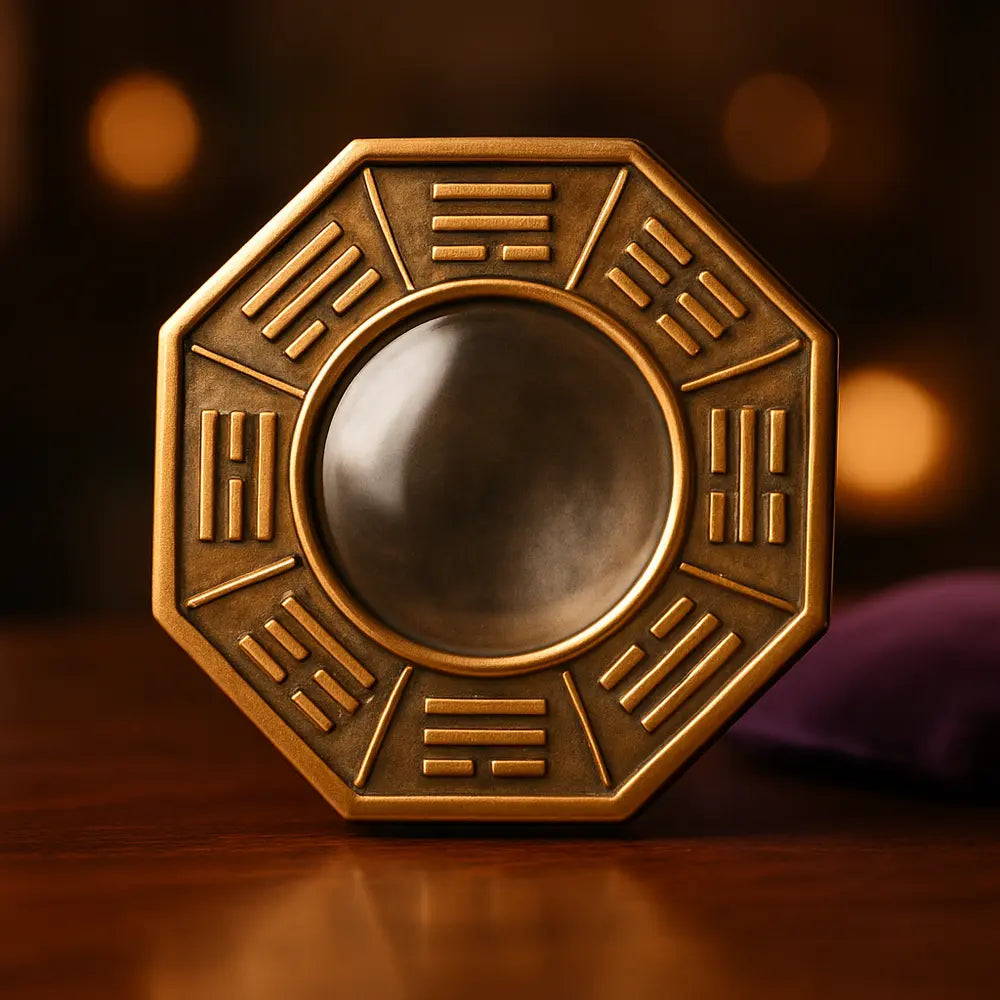
Miroirs Bagua
5 produits
Affiche 1 - 5 de 5 produits
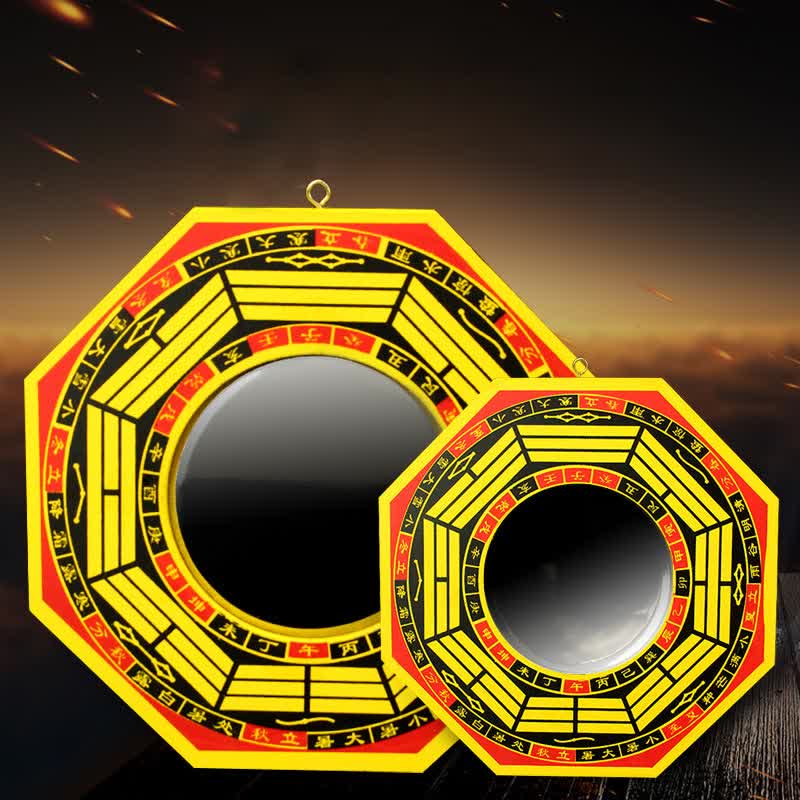
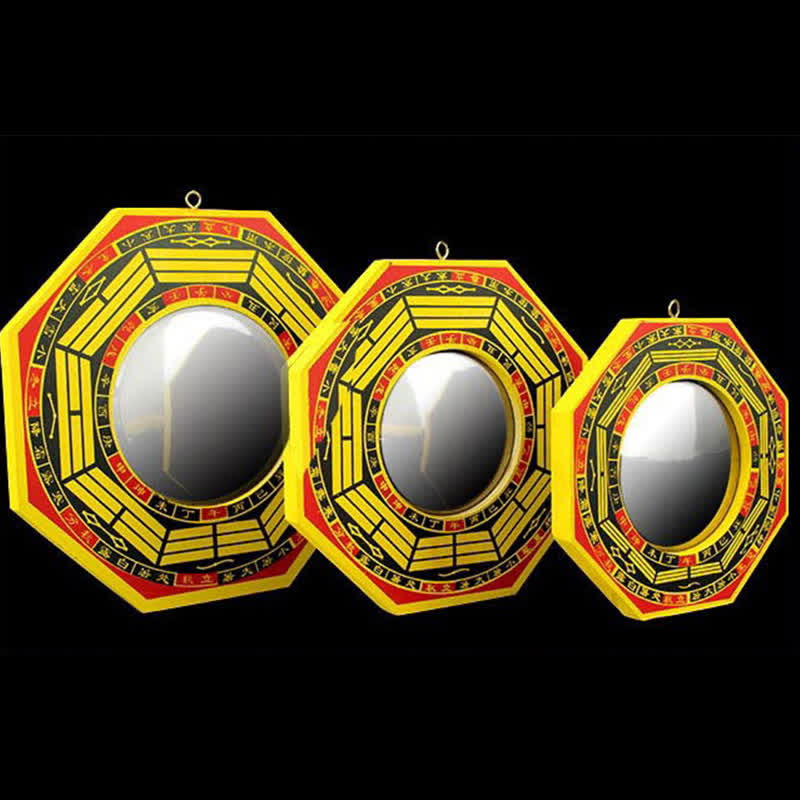
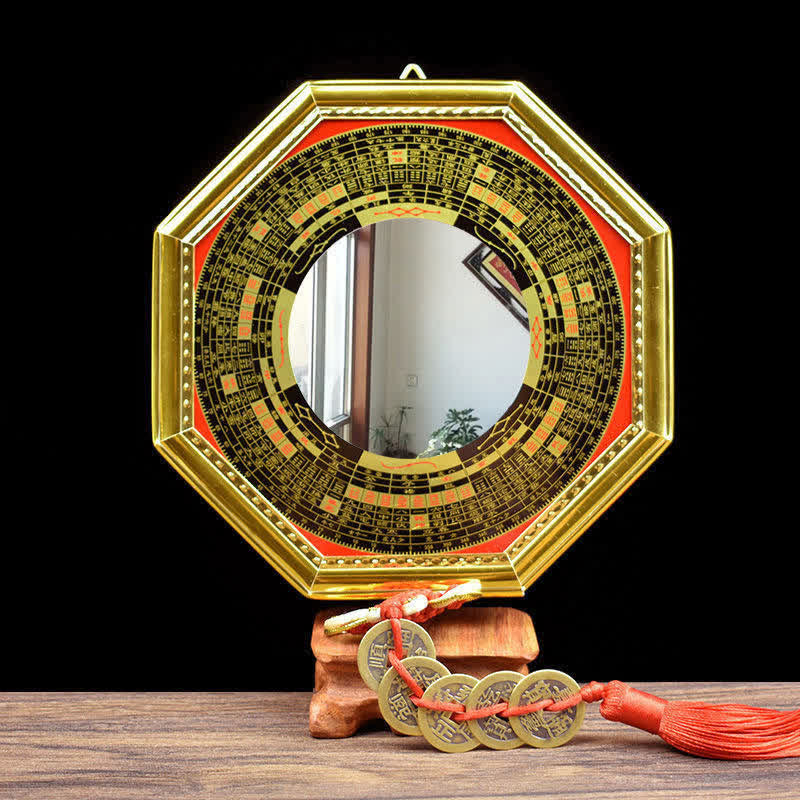
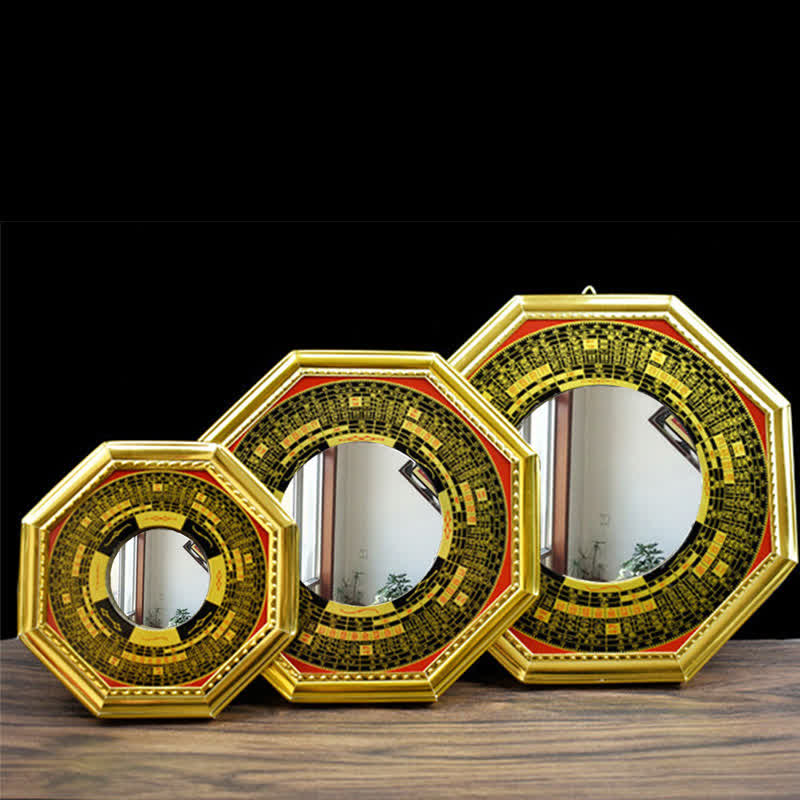
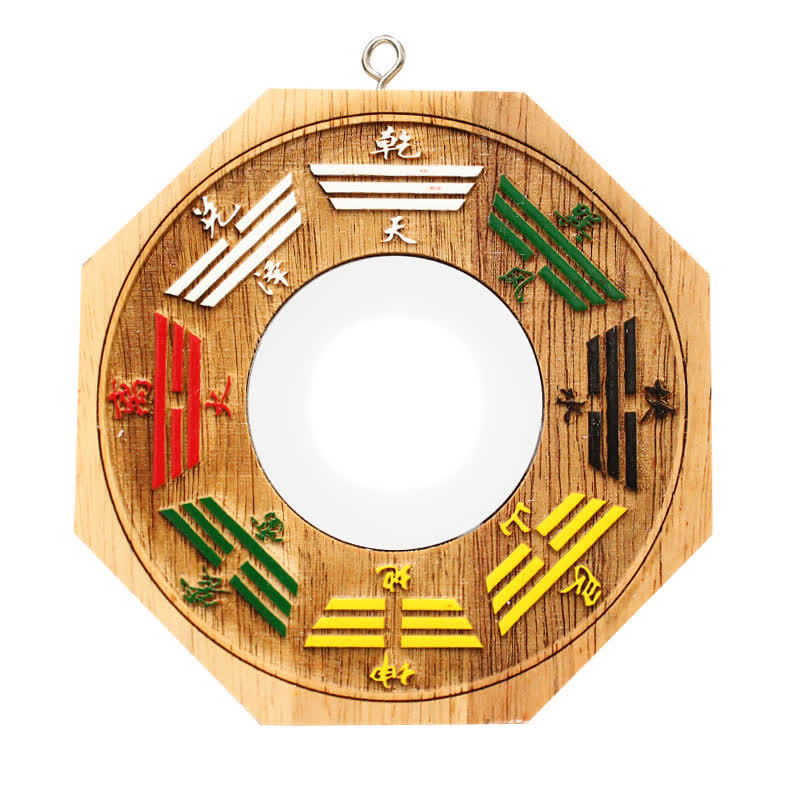
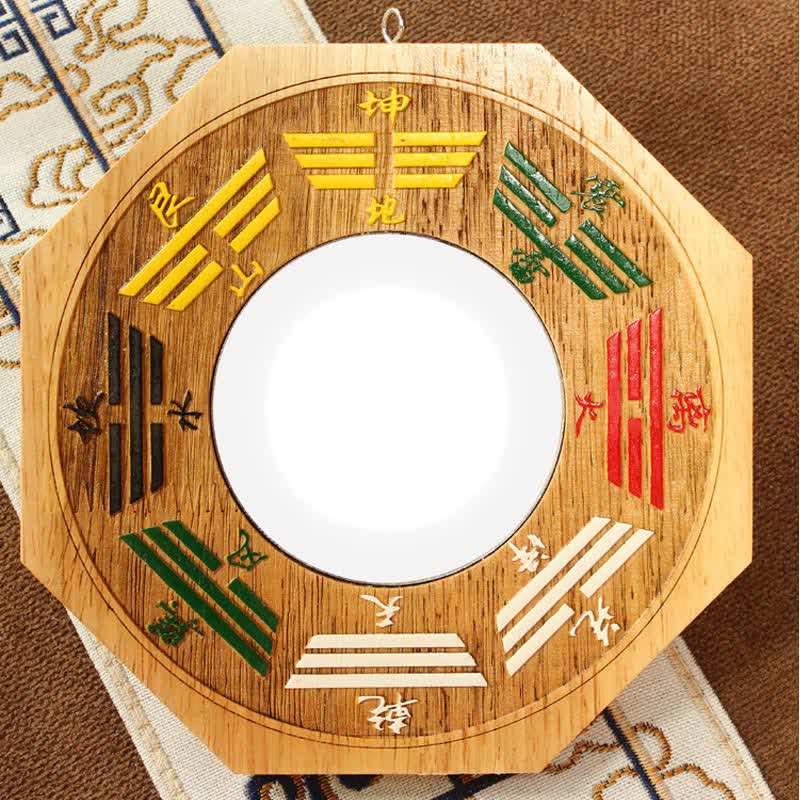
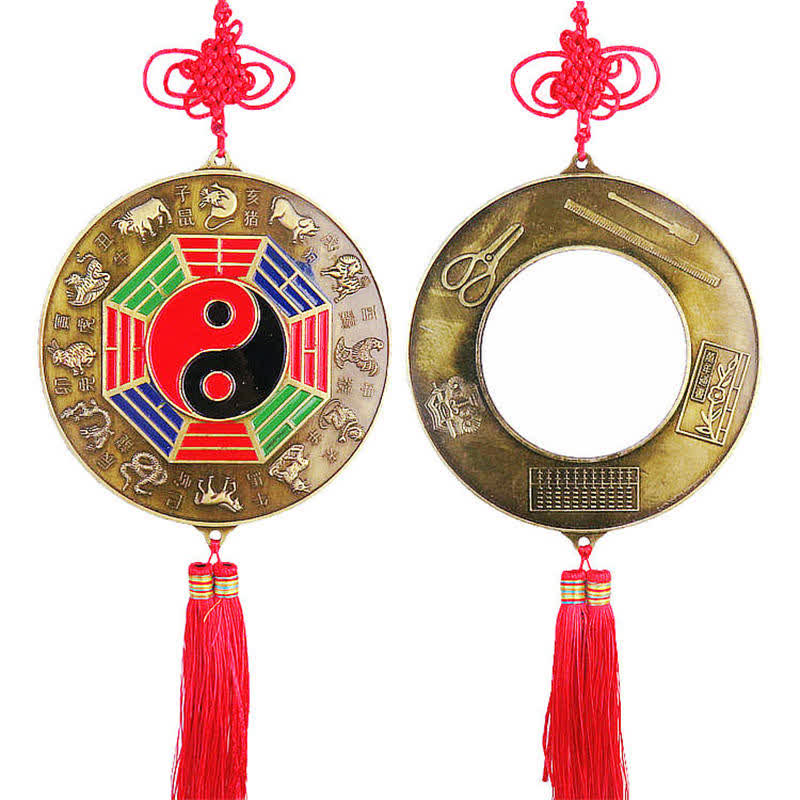
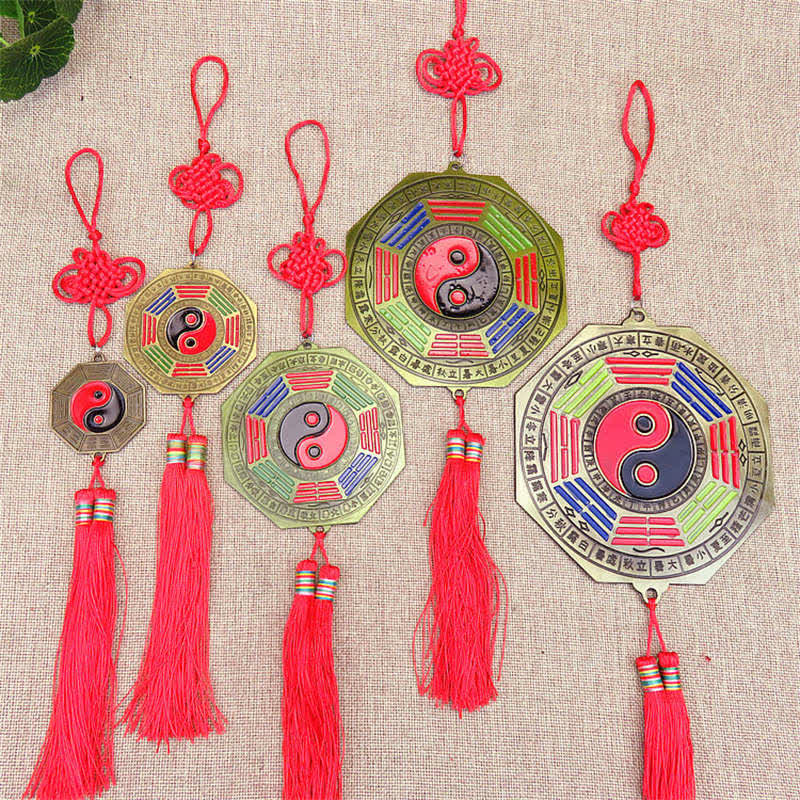
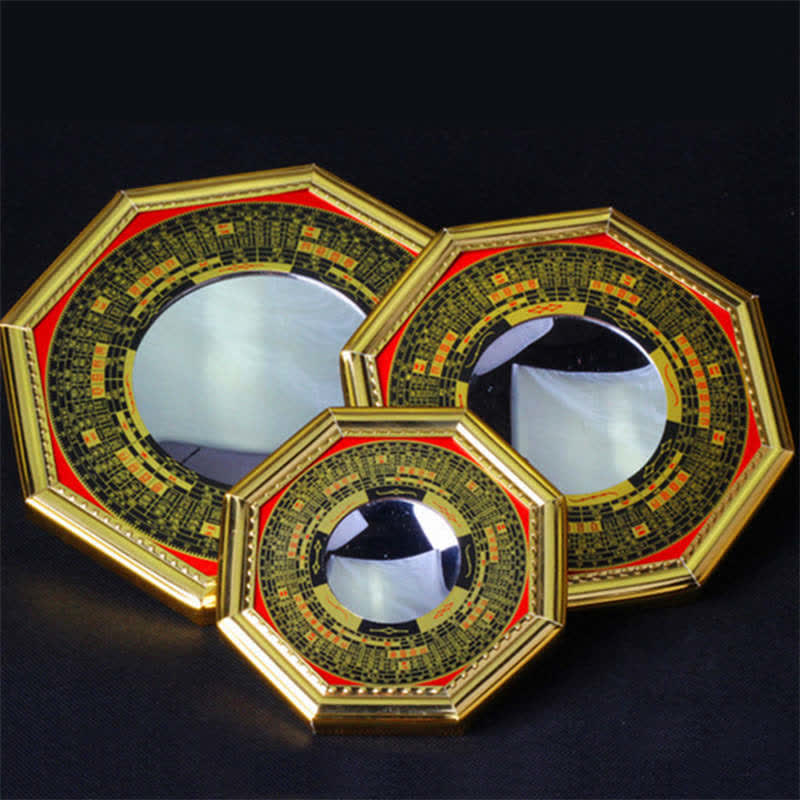
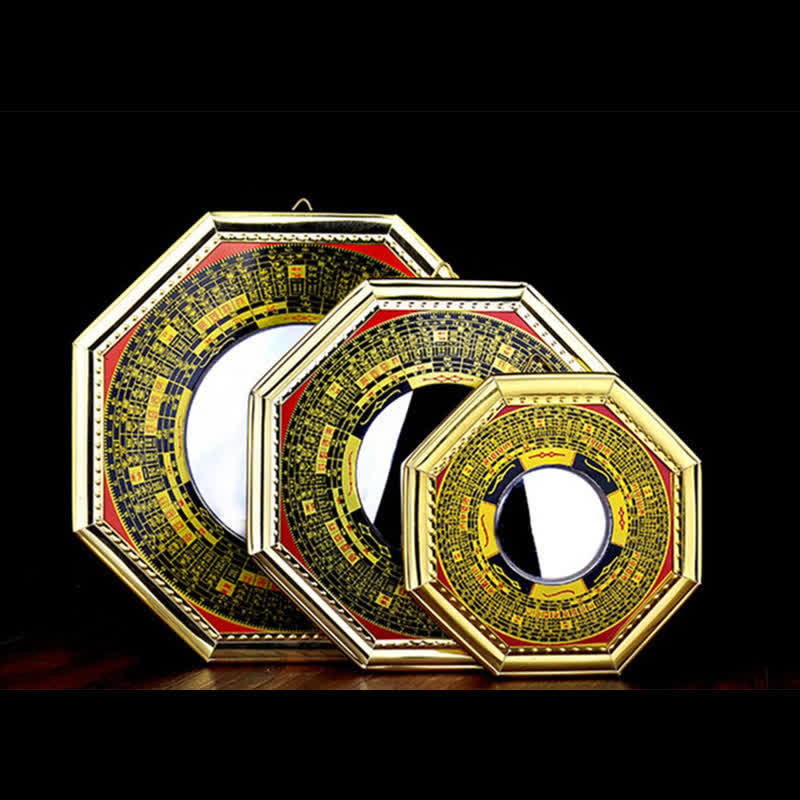
Bienvenue dans notre collection de miroirs Bagua chez Healing Sounds, de puissants outils Feng Shui conçus pour harmoniser et protéger votre environnement. Chaque miroir Bagua de notre sélection est un puissant instrument pour gérer le flux d'énergie, ou Chi, dans votre maison ou votre espace de travail. Découvrez comment ces miroirs traditionnels peuvent vous aider à détourner les influences négatives et à cultiver un espace de sérénité et d'équilibre.
Comprendre la signification du miroir Bagua et sa signification
Le miroir bagua est plus qu'un simple objet décoratif ; c'est un pilier du Feng Shui, vénéré pour sa capacité à interagir avec l'énergie et à la transformer. Ses origines sont profondément ancrées dans la philosophie chinoise ancienne et le Yi King, ou Livre des Mutations. Comprendre la signification du miroir bagua est essentiel pour libérer son potentiel protecteur.
Ces miroirs sont généralement octogonaux, chaque côté représentant l'un des huit trigrammes (Bagua). Ces trigrammes sont des représentations symboliques des forces naturelles et des aspects fondamentaux de la vie. Au centre, un miroir – plat, convexe ou concave – interagit activement avec l'énergie environnante.
L'objectif principal Un outil de gestion de l'énergie
Le rôle principal d'un miroir bagua est d'être l'un des outils de protection les plus efficaces du feng shui . Il est utilisé pour dévier l'énergie négative , appelée Sha Chi ou « souffle mortel », qui peut provenir de diverses sources. Cette énergie négative peut provenir des angles vifs des bâtiments voisins, des structures oppressantes, ou même des turbulences d'une rue animée.
En plaçant stratégiquement un miroir bagua , vous pouvez détourner cette énergie néfaste de votre espace de vie ou de travail, préservant ainsi le bien-être et l'harmonie qui y règnent. C'est une mesure proactive du Feng Shui pour maintenir une atmosphère positive et bienfaisante.
Le symbolisme des huit trigrammes
Le cadre entourant le miroir central est orné des huit trigrammes, fondamentaux pour comprendre la signification du miroir bagua . Chaque trigramme est une combinaison de trois lignes, pleines (Yang) ou brisées (Yin), représentant différents aspects de la vie et de la nature, tels que le ciel, la terre, le tonnerre, l'eau, la montagne, le vent, le feu et le lac.
Ces trigrammes imprègnent le miroir des huit trigrammes d'un plan énergétique complet. Leur disposition, en harmonie avec le miroir lui-même, permet d'analyser, d'équilibrer ou de repousser les énergies extérieures, assurant ainsi une influence positive sur votre espace. La présence du symbole yin-yang , souvent présent dans le design Bagua, souligne encore davantage le rôle du miroir dans l'équilibrage des énergies.
Types de miroirs Bagua et leurs utilisations spécifiques
Comprendre les différents types de miroirs Bagua – convexes, concaves et plats – est essentiel pour les utiliser efficacement. Chaque type interagit avec l'énergie de manière spécifique, le rendant ainsi adapté à des situations et des intentions spécifiques. Choisir le bon type de miroir Bagua Feng Shui est essentiel pour obtenir le résultat énergétique souhaité.
Le miroir convexe Bagua pour se protéger du Sha Chi
Un miroir bagua convexe présente une surface incurvée vers l'extérieur. Cette forme est conçue pour repousser et disperser efficacement l'énergie négative intense, ou Sha Chi. Il agit comme un bouclier, repoussant les influences néfastes qui pourraient être dirigées vers votre maison ou votre bureau.
Le miroir bagua convexe est particulièrement efficace contre les sources directes d'énergie négative, telles qu'un carrefour en T face à votre porte d'entrée, une grande structure imposante ou le bord tranchant d'un bâtiment voisin (flèche empoisonnée). Sa nature expansive disperse efficacement la force néfaste, l'empêchant de pénétrer et d'affecter votre espace. C'est donc un outil essentiel pour ceux qui recherchent une déviation énergétique efficace.
Le miroir concave Bagua neutralisant et absorbant l'énergie
À l'inverse, un miroir bagua concave présente une surface incurvée vers l'intérieur. Au lieu de repousser l'énergie, il est conçu pour absorber et neutraliser les énergies négatives. Il peut également servir à recueillir et concentrer le Chi positif si l'environnement extérieur est favorable, mais que l'énergie semble faible ou dispersée.
Un miroir bagua concave est utilisé lorsque l'énergie négative externe est moins agressive ou lorsque l'on souhaite la gérer et la transformer en douceur. Par exemple, si une structure voisine est inesthétique sans être directement menaçante, un miroir concave peut aider à « contenir » son impact visuel et à neutraliser énergétiquement toute influence négative subtile. C'est une approche plus subtile que l'action affirmée d'un miroir convexe.
Le miroir plat Bagua réfléchissant et stabilisant
Le miroir Bagua plat , aussi appelé miroir Bagua traditionnel ou standard, possède une surface réfléchissante neutre et non déformante. Sa fonction principale est de renvoyer l'énergie directement, sans l'amplifier ni la diminuer. Il est généralement considéré comme le plus neutre des trois types.
Un miroir bagua plat peut être utilisé pour renvoyer toute forme d'énergie, positive ou négative. On le choisit souvent lorsque la nature de l'énergie extérieure est ambiguë ou lorsqu'une réflexion simple et directe est souhaitée. C'est un choix équilibré pour la protection générale et le maintien de l'équilibre énergétique, agissant comme une simple cure feng shui .
Placement stratégique du miroir Bagua pour une protection optimale
L'efficacité d'un miroir bagua dépend grandement de son placement correct. Un placement judicieux garantit qu'il remplit sa fonction première : dévier l'énergie négative et protéger votre espace sans causer de dommages involontaires. C'est un aspect essentiel de l'utilisation de ces puissants remèdes maison feng shui .
Directives générales pour le positionnement de votre miroir Bagua
L'emplacement le plus courant et le plus recommandé pour un miroir bagua est à l'extérieur de votre maison, généralement au-dessus de l'entrée principale ou d'une fenêtre donnant sur une source de Sha Chi. Le miroir doit être orienté vers l'extérieur, loin de votre maison, directement vers la source d'énergie négative que vous souhaitez atténuer.
Il est crucial de ne pas placer le miroir bagua à l'intérieur de votre maison. Ses puissantes propriétés de réflexion d'énergie sont conçues pour les influences extérieures et peuvent être perturbatrices en intérieur, car elles peuvent refléter l'énergie personnelle ou créer une atmosphère instable. L'objectif est de l'utiliser comme miroir pour protéger l'extérieur de la porte d'entrée .
Assurez-vous que le miroir est accroché avec respect et sécurité. Il doit être de niveau et positionné de manière à cibler précisément la source d'énergie indésirable. De nombreux praticiens recommandent de consulter un expert en Feng Shui pour un positionnement précis, notamment dans les situations complexes.
Scénarios spécifiques pour le placement des miroirs Bagua
Différentes situations nécessitent un placement précis du miroir bagua . Si vous êtes confronté à une « flèche empoisonnée » – comme un angle aigu d'un bâtiment, un grand pylône ou une route menant directement à votre maison – un miroir bagua convexe est souvent recommandé, placé directement face à la structure incriminée.
En cas de problèmes de voisinage difficiles ou d'environnement épuisant, un miroir bagua peut être une solution discrète mais efficace. Si la propriété d'un voisin émet une énergie négative, un miroir peut être placé pour la dévier. Cependant, il est essentiel de procéder de manière éthique, en veillant à ce que votre miroir ne dirige pas d'énergie néfaste vers autrui. L'objectif est la protection, et non l'agression.
Face à un cimetière, un hôpital ou tout autre lieu potentiellement perturbateur, un miroir bagua peut constituer un bouclier énergétique. Le type de miroir (convexe, concave ou plat) dépendra de l'intensité et de la nature de l'énergie perçue.
Considérations importantes à éviter
Il y a des choses à ne pas faire lors de l'utilisation d'un miroir bagua . Ne jamais pointer un miroir bagua directement vers la maison ou la porte d'entrée d'une autre personne. Ceci est considéré comme un acte agressif en Feng Shui et peut engendrer un karma négatif ou aggraver les conflits. Le miroir a une fonction purement défensive.
Évitez de placer les miroirs Bagua de manière à ce qu'ils se reflètent dans votre intérieur. De plus, comme indiqué précédemment, ne les utilisez pas à l'intérieur, surtout pas dans les chambres ou face au lit, car cela pourrait perturber votre sommeil et votre énergie. La sécurité des miroirs Feng Shui et leur utilisation éthique sont primordiales.
Vérifiez régulièrement l'état de votre miroir bagua . Un miroir fissuré ou endommagé doit être remplacé, car il risque de ne pas fonctionner correctement et pourrait même symboliser une protection brisée.
Choisir le matériau et la taille idéaux de votre miroir Bagua
Lors du choix d'un miroir bagua , le matériau et la taille sont des critères importants qui influencent ses propriétés énergétiques et son adéquation à vos besoins spécifiques. Ces facteurs contribuent à l'efficacité globale de cette décoration murale traditionnelle feng shui .
Importance matérielle dans le Feng Shui
Les miroirs Bagua sont traditionnellement encadrés de bois, matériau naturel et ancré dans le Feng Shui, favorisant la stabilité. L'essence de bois spécifique peut parfois apporter de subtiles qualités énergétiques. Certains miroirs Bagua modernes sont dotés de cadres en métal ou en d'autres matériaux, mais le bois reste le choix classique pour son lien avec les énergies naturelles.
La surface réfléchissante elle-même est, bien sûr, en verre ou en un matériau similaire. Le miroir doit être de bonne qualité et offrir un reflet net. Les trigrammes qui l'entourent sont généralement peints ou sculptés sur le cadre en bois. Le savoir-faire et le soin apportés à la fabrication du miroir chinois traditionnel contribuent également à sa puissance énergétique.
Choisir la bonne taille pour votre espace
Les miroirs Bagua existent en différentes tailles, allant généralement de quelques centimètres à plus de 30 centimètres de diamètre. En règle générale, la taille du miroir Bagua doit être proportionnelle au bâtiment qu'il protège et à l'ampleur du Sha Chi qu'il vise à contrer.
Pour une maison de taille standard exposée à une source d'énergie négative modérée, un miroir de 10 à 15 cm de diamètre est souvent suffisant. Pour les bâtiments plus grands ou les menaces énergétiques plus importantes, un miroir plus grand peut être plus approprié. Cependant, il est important de noter qu'un miroir plus grand n'est pas toujours préférable ; un miroir trop grand peut être trop agressif. Le choix doit être équilibré et réfléchi. En cas de doute, un miroir octogonal de taille moyenne constitue un point de départ polyvalent.
En fin de compte, le choix doit être adapté à votre espace et à votre situation. Fiez-vous à votre intuition et aux principes du Feng Shui pour choisir le matériau et la taille de votre décoration Feng Shui .
Intégration des miroirs Bagua à la philosophie des sons de guérison
Chez Healing Sounds, nous pensons que des outils comme le miroir bagua s'inscrivent dans une approche holistique du bien-être. Si le Feng Shui apporte une sagesse ancestrale pour l'harmonie environnementale, notre philosophie englobe également le pouvoir du son, des cristaux et des rituels de pleine conscience pour cultiver la paix intérieure et extérieure. Un miroir bagua complète cette approche en s'adressant au paysage énergétique extérieur, créant ainsi un sanctuaire où les pratiques de guérison personnelle peuvent s'épanouir.
Nous choisissons nos miroirs Bagua avec une compréhension profonde de leur symbolisme feng shui et de leur rôle dans la promotion d'un flux énergétique équilibré. Nous encourageons l'utilisation de ces miroirs non seulement comme déflecteurs de négativité, mais aussi comme rappels de l'interdépendance de notre environnement et de notre état intérieur. En gérant consciemment les énergies qui nous entourent, nous créons des espaces propices à la croissance spirituelle et à la guérison.
Notre collection de miroirs Bagua est soigneusement sélectionnée pour garantir son authenticité et son intégrité énergétique. Nous sommes convaincus que ces outils anciens, utilisés avec respect et compréhension, peuvent être des alliés précieux pour une vie harmonieuse et dynamique, en accord avec les principes fondamentaux des Sons de guérison.
L'utilisation stratégique d'un miroir Bagua peut améliorer considérablement la qualité énergétique de votre environnement, favorisant un sentiment de sécurité et de bien-être. En comprenant son utilité, ses différents types et son placement approprié, vous pouvez exploiter efficacement son pouvoir de protection et d'harmonie. Explorez notre collection chez Healing Sounds pour trouver le miroir Bagua qui correspond à vos besoins et à vos intentions.
Questions fréquemment posées sur les miroirs Bagua
En Feng Shui, le miroir bagua est intimement lié à la protection et à l'équilibre énergétique. Il s'agit d'un miroir octogonal, généralement encadré des huit trigrammes du Yi King, conçu pour dévier l'énergie négative (Sha Chi) d'une maison ou d'un bâtiment. Sa forme et ses symboles s'associent pour analyser et transformer les influences énergétiques extérieures, préservant ainsi l'espace.
Un miroir bagua est principalement utilisé comme un puissant outil de protection Feng Shui. Sa fonction principale est de contrer et de repousser les énergies négatives ou néfastes, appelées Sha Chi, qui pourraient être dirigées vers une habitation par des sources extérieures. Ces sources peuvent inclure des éléments architecturaux tranchants (« flèches empoisonnées »), des routes très fréquentées ou d'autres éléments environnementaux perturbateurs.
Les miroirs Bagua remplissent leur fonction protectrice en interagissant avec les énergies extérieures. Selon leur type (convexe, concave ou plat), ils repoussent et dispersent (convexe), absorbent et neutralisent (concave) ou réfléchissent (plat) le Sha Chi entrant. Les huit trigrammes qui les entourent renforcent encore cette fonction en fournissant un cadre symbolique pour la transformation énergétique, garantissant ainsi l'équilibre et l'harmonie du champ énergétique de la maison.
Choisissez un miroir bagua convexe (courbé vers l'extérieur) pour repousser efficacement les sources d'énergie négative directes et puissantes, comme un carrefour en T ou des angles vifs dirigés vers votre maison. Optez pour un miroir bagua concave (courbé vers l'intérieur) pour absorber, neutraliser ou capter en douceur les énergies plus subtiles ou dispersées. Un miroir plat est neutre et réfléchit l'énergie telle quelle. Le choix dépend de l'intensité et de la nature de l'énergie externe que vous souhaitez traiter.
Traditionnellement, les miroirs bagua sont encadrés de bois, un matériau naturel et apaisant. Le miroir lui-même doit être de bonne qualité. Sa taille doit être proportionnée à votre intérieur et à la menace énergétique perçue ; un diamètre de 10 à 15 cm est courant pour un usage résidentiel. Évitez les miroirs trop grands, sauf avis contraire d'un professionnel, car l'équilibre est primordial. L'accent est mis sur une échelle appropriée et des matériaux authentiques.
Le meilleur emplacement pour un miroir bagua est généralement à l'extérieur de votre maison, au-dessus de la porte d'entrée ou d'une fenêtre, orienté vers la source d'énergie négative (Sha Chi). Il ne doit jamais être placé à l'intérieur. Le miroir doit être positionné de manière à faire face directement à l'énergie indésirable, en veillant à ce qu'il soit dirigé loin de votre espace de vie afin de dévier efficacement la négativité.
Un miroir bagua convexe doit être placé à l'extérieur, orienté vers l'extérieur de votre propriété, directement vers une source d'énergie négative importante, ou Sha Chi. On le place généralement au-dessus de l'entrée principale ou près d'une fenêtre directement alignée avec une « flèche empoisonnée », comme l'angle aigu d'un autre bâtiment, un carrefour en T ou de grandes structures imposantes. Son but est de repousser ces énergies néfastes.
Si vous ressentez une énergie négative provenant de la propriété d'un voisin, vous pouvez placer un miroir bagua à l'extérieur de votre maison, face à la source de cette énergie négative. Cependant, il est crucial de le faire avec éthique et subtilité. Veillez à ce que le miroir ne se reflète pas directement dans les fenêtres ou les pièces à vivre du voisin, car cela pourrait être perçu comme une forme d'agression. L'objectif est de créer un bouclier protecteur pour votre propre espace, et non de le blesser directement.
Conseils Feng Shui : placez toujours le miroir bagua à l'extérieur, jamais à l'intérieur. Veillez à ce qu'il soit orienté vers la source de Sha Chi, loin de votre domicile. Ne le dirigez jamais directement vers la maison ou la porte d'une autre personne. Choisissez le type de miroir adapté (convexe, concave, plat) à la situation énergétique spécifique. Manipulez-le avec respect et remplacez-le s'il est endommagé. En cas de doute, consultez un professionnel du Feng Shui pour l'emplacement de votre miroir bagua .
En Feng Shui, les interdits généraux concernant les miroirs incluent : éviter de les placer directement face à la porte d'entrée (rejet d'énergie), face au lit (perturbation du sommeil) ou face au désordre ou aux toilettes (amplification des énergies négatives). Concernant les miroirs bagua en particulier, le principal interdit est de ne jamais les utiliser à l'intérieur ni de les diriger vers les habitations. Une utilisation éthique et respectueuse est primordiale pour garantir la sécurité et des résultats positifs des miroirs Feng Shui .
Découvrez d'autres articles pour embellir votre espace sacré au sein de notre collection de tentures murales .





